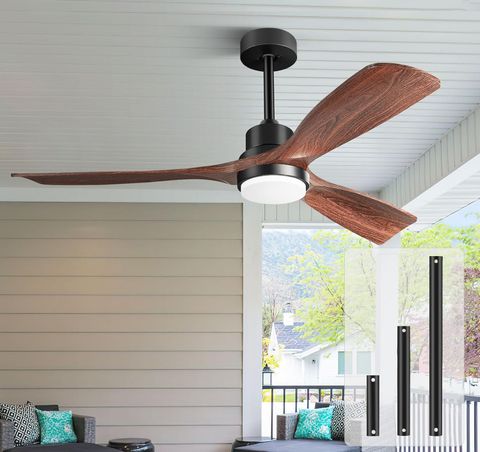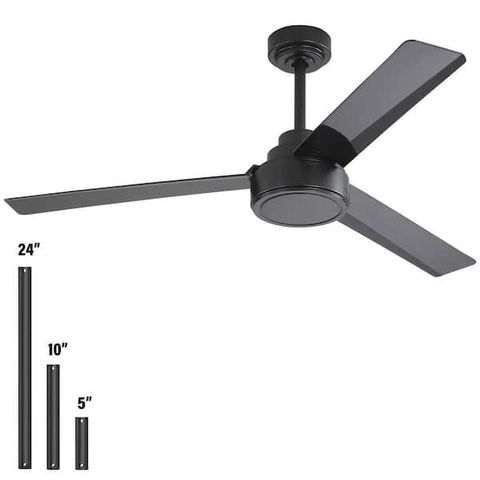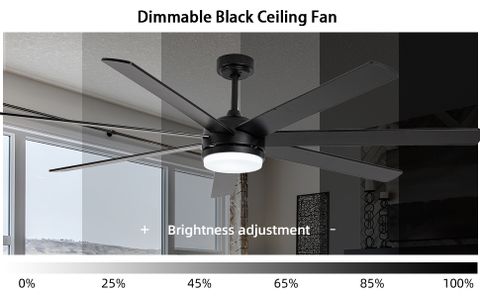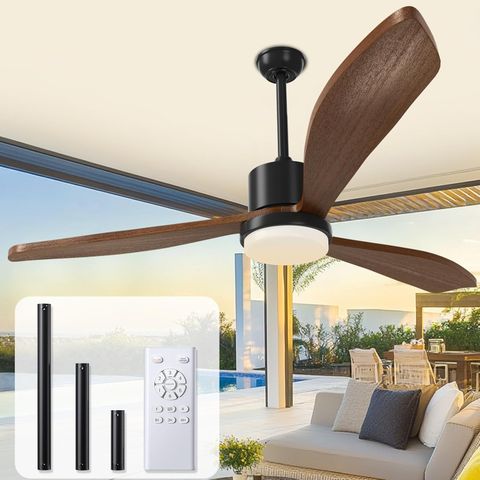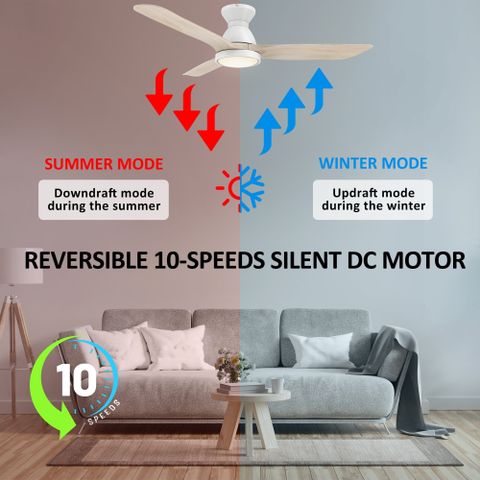When it comes to outdoor ceiling fans, choosing the correct adjustable downrod isn’t just about aesthetics – it’s about safety, performance, and longevity. The downrod connects your fan to the ceiling and plays a crucial role in how well your fan operates in outdoor conditions.
Outdoor ceiling fans bring much-needed relief to patios, decks, and covered porches. But there’s more to a successful outdoor fan installation than just picking the right blade style or motor type. The downrod you select can make or break your fan’s performance and lifespan. This guide walks you through everything you need to know about choosing the perfect adjustable downrod for your outdoor setup.
Understanding What a Downrod Does
Think of the downrod as the fan’s backbone. It’s the metal rod that connects your ceiling fan to the mounting bracket and ultimately to the ceiling. For outdoor installations, this connection becomes even more critical because the fan must withstand weather elements, wind forces, and temperature changes. The right downrod ensures your fan hangs properly and maintains its structural integrity over time. Without proper support, even the most powerful outdoor fan can become unstable or dangerous.
Measuring Your Space Correctly
Before purchasing any downrod, measure your ceiling height carefully. Start by measuring from the floor to the ceiling, then determine how much clearance you want between the fan blades and the ground. A general rule of thumb is at least 7 feet of clearance for indoor fans and 8-9 feet for outdoor applications. You’ll also need to consider the distance from the ceiling to where the fan will hang. Most outdoor fans require a minimum hanging distance of 14 inches from the ceiling to the bottom of the fan. If you have a vaulted ceiling or unusual layout, you might need custom measurements. Always double-check your measurements before buying to avoid costly mistakes.
Material Matters for Outdoor Durability
Outdoor downrods face harsher conditions than their indoor counterparts. Stainless steel and aluminum are the top choices for outdoor applications. Stainless steel offers excellent rust resistance and strength, making it ideal for coastal areas or high-humidity zones. Aluminum downrods are lighter weight and also resist corrosion well. Some manufacturers offer powder-coated finishes that add extra protection against the elements. Avoid galvanized steel if possible, as it can develop rust spots over time. The material choice directly impacts how long your fan will last and how safely it will operate year-round.
Length Options and Their Uses
Downrods come in various lengths, typically ranging from 3 inches to 60 inches. Shorter rods work best when you have low ceilings or want the fan closer to the ceiling. Longer rods are necessary when you have high ceilings or want to increase the clearance between the fan and the floor. For outdoor installations, longer downrods often provide better airflow by allowing the fan to operate at optimal height. Consider that a 6-inch downrod might be sufficient for a 9-foot ceiling, while a 24-inch rod could be needed for a 12-foot ceiling. Always check manufacturer specifications to ensure you’re choosing the right length for your space.
Installation Considerations and Safety
Proper installation is crucial for outdoor fan safety. The downrod must be securely fastened to prevent wobbling or detachment during strong winds. Check that your ceiling can support the combined weight of the fan and downrod. Most outdoor fans weigh between 15 and 40 pounds, plus the additional weight of the downrod. If you’re unsure about electrical connections or structural support, don’t hesitate to call a professional electrician. A loose or improperly installed fan can cause serious injury or property damage. Many manufacturers recommend having a licensed electrician handle outdoor installations to ensure compliance with local building codes.
Matching Your Fan Model and Specifications
Not all downrods are compatible with every fan model. Before purchasing, verify that the downrod matches your fan’s mounting requirements. Check the manufacturer’s specifications for maximum downrod length and weight capacity. Some fans have specific downrod requirements that must be met for warranty coverage. Look for downrods that are rated for outdoor use and have appropriate certifications. If you’re replacing an old downrod, take measurements of the existing one to ensure compatibility. Sometimes, a slightly different model number can make all the difference in performance and safety.
Choosing the right adjustable downrod for your outdoor ceiling fan might seem like a small detail, but it’s actually one of the most important decisions you’ll make for your installation. Taking time to measure properly, select quality materials, and ensure correct compatibility will pay dividends in safety, performance, and longevity. Remember, an outdoor fan that’s properly supported will keep you comfortable for years to come. Whether you’re installing a new fan or replacing an old one, invest the time in getting this right. The extra effort now will save you from future headaches and potential hazards. Your outdoor space deserves a fan that’s not only beautiful but also built to last.

